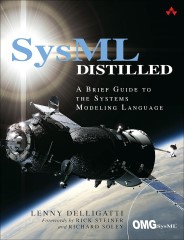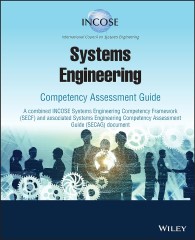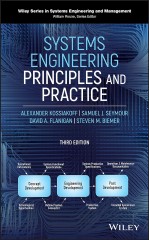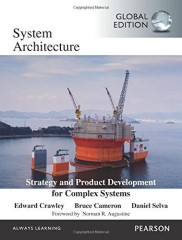Effective planning is the linchpin of success in systems engineering, where the orchestration of various elements ensures seamless projects, efficient attainment of objectives, and adept risk management. At the heart of this strategic endeavor lies the System Engineering Management Plan (SEMP), a meticulously crafted roadmap that navigates the complexities inherent in system development.
This article serves as a guide to the foundational components that constitute a robust systems engineering plan. Like the intricate pieces of a puzzle, we will explore the nuances of initial planning, the prowess of deliverables, and the comprehensive content of the plan itself. As we delve into these essential aspects, we’ll illuminate their significance within the broader framework of project management, where meticulous coordination and foresight are paramount.
Join us on this journey as we unravel the key elements that transform a mere plan into a dynamic tool for success in systems engineering. From requirements analysis to risk management, from stakeholder communication to compliance with industry standards, we’ll navigate the landscape of keywords crucial for crafting an effective Systems Engineering Management Plan, and sometimes refered to as just Systems Engineering Plan. Let’s embark on the exploration of a roadmap that not only guides but empowers the realization of sophisticated and resilient systems.
Check out our review of the Top 10 Online Systems Engineering Courses.
Table of Contents
- Understanding the Need for a SEMP: Navigating the Landscape of Systems Engineering Planning
- Systems Engineering Management Plan (SEMP) Table of Contents Example
- Early Planning in the Concept Phase: Paving the Way for Seamless Integration
- Systems Engineering Deliverables: Mapping the Blueprint for Success
- SEMP Content: Crafting a Comprehensive Roadmap
- SE Technical Processes
- Information Resources: Facilitating Seamless Communication
- Context within Project Plans
- System Engineering Management Plan (SEMP) Outline
- Wrap-up
In the intricate realm of systems engineering, the foundation for project success lies in meticulous planning. Central to this strategic orchestration is the Systems Engineering Management Plan (SEMP), a guiding document that shapes the trajectory of system development endeavors. Before delving into the intricacies of crafting an effective SEMP, it is imperative to recognize the critical need for such a plan.
The decision to develop a comprehensive SEMP hinges on various factors, each acting as a compass in determining the necessity of this tailored roadmap. The range, uniqueness, intricacy, and associated risks linked to the acquisition of new or modified assets serve as key indicators. Projects endowed with substantial systems engineering efforts and dedicated resources emerge as prime candidates for the implementation of a SEMP.
By acknowledging the nuanced demands of different projects, it becomes evident that not every endeavor necessitates a standalone SEMP. Instead, this tailored plan proves most beneficial when intricacies and risks warrant a more detailed and structured approach. In instances where the stakes are high, and the system’s complexity demands precision, a well-crafted SEMP becomes an invaluable asset in the project manager’s toolkit.
As we embark on this exploration of system engineering planning, we will unravel the core components that define a robust SEMP. From early planning considerations in the concept phase to the delineation of system engineering deliverables, this journey will illuminate the significance of each keyword within the broader framework of project management. Join us in deciphering the strategic landscape where effective planning converges with system engineering excellence.
Recommended Further Reading Amazon BooksSystems Engineering Management Plan (SEMP) Table of Contents Example
The Systems Engineering Management Plan (SEMP) serves as the guiding blueprint for orchestrating success in complex engineering endeavors. This outline encapsulates the essential components and strategic considerations that form the backbone of an effective SEMP.
From understanding the critical need for meticulous planning to navigating the intricacies of early concept phase involvement, each section contributes to the holistic framework that ensures seamless integration within project management. As we delve into the SEMP outline, it becomes evident that its dynamic nature and comprehensive scope are tailored to meet the diverse demands of system engineering projects. Join us on this exploration of the SEMP, where each section is a crucial piece of the puzzle, converging towards excellence in system engineering.
Here is a typical Systems Engineering Management Plan (SEMP) table of contents example:
- Introduction
- 1.1 Purpose and scope of the SEMP
- 1.2 Project background and context
- Project Overview
- 2.1 Project objectives and goals
- 2.2 Stakeholder identification and engagement
- Systems Engineering Process
- 3.1 Overview of the system engineering process
- 3.2 Integration with project lifecycle
- Roles and Responsibilities
- 4.1 Identification of key roles and responsibilities
- 4.2 Team structure and communication channels
- SEMP Development and Maintenance
- 5.1 Procedures for SEMP development and updates
- 5.2 Revision control and version history
- Requirements Management
- 6.1 Identification and documentation of system requirements
- 6.2 Traceability matrix and requirement changes
- Risk Management
- 7.1 Risk identification, assessment, and mitigation strategies
- 7.2 Contingency planning and risk monitoring
- Configuration Management
- 8.1 Configuration identification and control
- 8.2 Baseline establishment and change management
- Quality Assurance
- 9.1 Quality standards and metrics
- 9.2 Audits and inspections
- Verification and Validation
- 10.1 Testing procedures and criteria
- 10.2 Validation protocols and acceptance criteria
- Documentation and Reporting
- 11.1 Documentation requirements and formats
- 11.2 Reporting mechanisms and frequency
- Interfaces and Integration
- 12.1 Identification and management of internal and external interfaces
- 12.2 Integration testing and coordination
- Budget and Resource Management
- 13.1 Budget allocation and financial planning
- 13.2 Resource allocation and utilization
- Schedule and Milestones
- 14.1 Project schedule and timeline
- 14.2 Milestone definition and tracking
- Communication Plan
- 15.1 Communication strategy and channels
- 15.2 Stakeholder engagement and updates
- Conclusion
- 16.1 Recapitulation of key SEMP components
- 16.2 Charting the course for systems engineering success
Early Planning in the Concept Phase: Paving the Way for Seamless Integration
In the dynamic landscape of systems engineering, success begins with foresight and planning, especially during the crucial concept phase. This initial stage sets the tone for the entire project, and within its confines, the early planning of Systems Engineering (SE) activities takes center stage. The cornerstone of this phase is aligning the SE activities and deliverables with the overarching project objectives, an essential step in the development of a Systems Engineering Plan.
Early planning in the concept phase serves as the bedrock for the subsequent stages of system development. By strategically commencing SE activities as soon as possible, teams can meticulously define and analyze business requirements, seamlessly translating them into precise system requirements. This proactive approach not only facilitates a deeper understanding of project intricacies but also establishes a robust foundation for the ensuing engineering endeavors.
The Systems Engineering Management Plan (SEMP), when conceived during the concept phase, extends its influence as a guiding beacon. It delineates a roadmap that not only aligns with system-level objectives but also sets clear targets and measurable outcomes. This early integration of the SEMP ensures that the plan evolves organically, adapting to the project’s unique demands and intricacies.
As we navigate the concept phase, we will explore how the SEMP becomes a dynamic tool, shaping and guiding SE activities. From the inception of business requirements to the crystallization of system requirements, this section illuminates the importance of early planning in laying the groundwork for a seamless and well-executed system engineering project. Join us in unraveling the intricacies of the concept phase, where strategic foresight transforms into tangible project success.

Systems Engineering Deliverables: Mapping the Blueprint for Success
In the realm of systems engineering, success is intricately tied to the precision and effectiveness of deliverables at various project stages. The System Engineering Management Plan (SEMP) serves as the guiding force, outlining a comprehensive set of deliverables aligned with Change Control requirements. Each deliverable plays a specific role, collectively forming the blueprint for success in systems development.
| Deliverable | Description |
|---|---|
| Requirements Documents | Complete and signed documents outlining system requirements, forming the critical foundation for project clarity and alignment. |
| RAMS (Reliability, Availability, Maintainability, and Safety) Considerations | Structured approach to addressing pivotal aspects of system performance, ensuring reliability, availability, maintainability, and safety. |
| Systems Architecture | Design blueprint depicting the overall structure and organization of the IT system, serving as a visual guide for development. |
| Operational Concept | Clearly defined concepts outlining how the IT system will operate, providing insights into its day-to-day functionality. |
| Maintenance Concept | Detailed plan specifying how the IT system will be maintained, ensuring longevity and optimal performance throughout its lifecycle. |
| Initial Safety Change Plan | Formulation of a plan addressing safety considerations and outlining initial steps for mitigating potential risks. |
Understanding and articulating these deliverables is paramount, ensuring not only compliance with project standards but also establishing a robust foundation for the project’s progression. Join us as we navigate through the intricacies of systems engineering deliverables, exploring their significance within the overarching framework of the SEMP. Together, let’s unravel the details of this crucial phase, where meticulous planning transforms into tangible systems engineering excellence.
SEMP Content: Crafting a Comprehensive Roadmap
The Systems Engineering Management Plan (SEMP) should include several essential sections as a minimum requirement. It should clearly articulate the top-level objective or need for the project, providing a basis for business requirements and system requirements. The plan should be integrated with other management plans, such as project management, safety assurance, risk management, and procurement management. The SEMP should establish a clear requirements structure, traceability of requirements, and allocation of system requirements to subsystems.
The effectiveness of any systems engineering endeavor is intricately tied to the clarity and depth of its System Engineering Management Plan (SEMP). A well-crafted SEMP not only outlines the top-level objectives of the project but also serves as a dynamic roadmap, steering the course through the complexities of systems development.
The SEMP, at its core, is a document that demands a structured and comprehensive approach. As a minimum requirement, it should clearly articulate the overarching objectives or needs that the project aims to fulfill. This foundational element provides the basis for delineating business requirements and translating them into precise system requirements, establishing a solid groundwork for the entire project lifecycle.
Integral to the SEMP is its integration with other management plans, creating a cohesive framework for project execution. From project management to safety assurance, risk management, and procurement management, the SEMP acts as a linchpin, ensuring alignment with these parallel tracks of project oversight. This integration fosters consistency, coherence, and seamless coordination across all facets of the project.
Within the SEMP, specific sections are deemed essential. These include a clear requirements structure, traceability of requirements, and the allocation of system requirements to subsystems. Each of these components contributes to the overall effectiveness of the SEMP, providing a detailed roadmap that guides systems engineering teams through the intricate web of project intricacies.
As we explore the content of the Systems Engineering Plan, we will unravel the significance of each section, illuminating how they collectively contribute to the success of systems development projects. Join us in dissecting the intricacies of crafting a comprehensive SEMP, where every word and section plays a crucial role in steering the project toward excellence in systems engineering.
In the dynamic field of systems engineering, defining the scope and boundary of a project is paramount. This crucial step ensures that the appropriate level of System Engineering (SE) effort is allocated, aligning with the unique challenges and intricacies of systems development.
The Systems Engineering Management Plan (SEMP) plays a pivotal role in addressing the scope and boundary of the system. By meticulously defining the project’s scope, the SEMP sets the stage for a focused and effective SE effort. This includes considerations of the system’s complexity, interfaces, and operational environment, factors that profoundly influence the trajectory of systems development.
Moreover, the SEMP establishes the range of control over the system’s lifecycle, incorporating planned stage gates for progressive assurance. This strategic approach ensures that the project remains on track and that SE activities are synchronized with the evolving needs of systems development.
Recognizing that the scope and extent of the SEMP can vary based on project type, such as design and construction projects or build-operate-transfer (BOT) ventures, allows for tailored planning. This adaptability ensures that the SEMP remains a dynamic tool, capable of navigating the unique challenges presented by diverse systems engineering projects.
As we delve into the intricacies of scope and boundary within systems engineering, we will explore how the SEMP acts as a compass, guiding teams through the complexities of project dynamics. Join us in unraveling the strategic considerations that underpin successful systems development, where defining scope and boundaries is the keystone to unlocking project excellence.
Recommended Further Reading Amazon BooksSE Technical Processes
The success of systems engineering hinges on the meticulous execution of various System Engineering (SE) technical processes. These processes form the backbone of project management, ensuring that responsibilities, deliverables, tools, standards, and procedures are harmoniously aligned. In the intricate dance of systems development, the System Engineering Management Plan (SEMP) takes center stage, guiding the teams through these technical processes with precision.
| SE Technical Processes | Description |
|---|---|
| Requirements Management | Involves the identification, documentation, and management of system requirements throughout the project lifecycle. |
| Interface Management | Focuses on the seamless coordination and integration of system components, ensuring smooth communication between diverse elements. |
| RAM Management | Encompasses Reliability, Availability, and Maintainability considerations, laying the groundwork for a robust and resilient system. |
| Safety Management | Addresses safety concerns, outlining protocols and measures to mitigate potential risks and ensure a secure systems environment. |
| EMC Management | Manages Electromagnetic Compatibility (EMC) considerations, safeguarding against interference issues that could impact system performance. |
| Verification and Validation | Involves the systematic evaluation and testing of the system to ensure that it meets specified requirements and functions as intended. |
Each of these SE technical processes plays a distinct yet interconnected role in the systems engineering landscape. The Systems Engineering Management Plan (SEMP) acts as a guide, delineating responsibilities and providing a roadmap for the seamless integration of these processes. Through a comprehensive approach, the SEMP ensures that the intricate web of systems development is meticulously woven, aligning with the project’s complexity and needs.
As we navigate through the landscape of systems engineering, this section delves into the intricacies of each technical process. Join us in unraveling the systematic orchestration of these processes, where the SEMP serves as the conductor, leading systems engineering teams towards a symphony of success.
Information Resources: Facilitating Seamless Communication
Effective communication, coordination, and management of System Engineering (SE) activities within systems engineering are contingent on well-defined information resources. These resources serve as the lifeblood of project progress, ensuring that requirements, interfaces, and technical details are clearly documented and readily available. The System Engineering Management Plan (SEMP) acts as the compass, guiding the creation and utilization of these essential information resources.
Within the realm of systems engineering, several key information resources come to the forefront:
- Requirements Databases: Central repositories that house detailed documentation of system requirements, facilitating easy access and updates throughout the project lifecycle.
- Technical Interface Registers: Catalogs detailing the interfaces between different system components, providing a comprehensive view of how these elements interact.
- Interface Control Documents: Detailed documents specifying the protocols and standards governing the interactions between various system interfaces.
These resources form the backbone of effective SE activities, allowing teams to navigate the complexities of systems development with clarity and precision. The SEMP, as a guiding document, outlines the creation, maintenance, and utilization of these resources, ensuring that they evolve in tandem with project needs.
As we delve into the intricacies of information resources in systems engineering, this section explores how the SEMP facilitates the creation of structured databases and registers. Join us in understanding how these resources become the conduit for seamless communication, fostering a collaborative environment that propels systems development towards success.
Context within Project Plans
In the expansive landscape of systems engineering, the System Engineering Management Plan (SEMP) does not stand in isolation but thrives within a web of interconnected project plans. This section explores the contextual relationships between the SEMP and other vital plans, both as a parent and peer, ensuring a cohesive approach to planning and acquisition of new or altered systems.
Parent Plans
| Parent Plans | Description |
|---|---|
| Asset Management Plan | Guides the management of assets throughout their lifecycle, aligning with broader organizational goals. |
| Project Management Plan | Provides a comprehensive overview of project management strategies, timelines, and resource allocation. |
| Safety Assurance Plan | Outlines protocols and measures to ensure the safety and reliability of systems throughout their lifecycle. |
| Risk Management Plan | Identifies and addresses potential risks, fostering proactive risk mitigation and contingency planning. |
| Procurement Management Plan | Guides the acquisition of necessary resources, ensuring a streamlined and efficient procurement process. |
Peer Plans
| Peer Plans | Description |
|---|---|
| Project Quality Plan | Focuses on maintaining and enhancing the quality of project deliverables, aligning with defined standards. |
| Safety Management Plan | Details safety protocols and measures, ensuring a secure working environment throughout the project. |
| Commercial Plan | Outlines commercial aspects, including budgeting and financial considerations, for effective project execution. |
Understanding the contextual relationships between the Systems Engineering Plan and these parent and peer plans is critical for seamless integration. The SEMP, as a parent plan, aligns with and influences these overarching strategies. Simultaneously, it finds its place among peer plans, contributing to a holistic framework that ensures consistency and integration across the entire project.
As we dissect the contextualization of the SEMP within project plans, this section illuminates how strategic alignment fosters a synergistic environment. Join us in exploring the intricate web of project oversight, where the SEMP plays a pivotal role in orchestrating success within the broader context of systems engineering.
System Engineering Management Plan (SEMP) Outline
Effective system engineering is grounded in meticulous planning, and at the heart of this planning lies the System Engineering Management Plan (SEMP). This section provides a comprehensive outline, breaking down the key components of a SEMP, highlighting its dynamic nature, and emphasizing its integration within the larger project management framework.
- Early Acknowledgment in the Concept Phase
- Acknowledge the significance of the SEMP early in the concept phase.
- Emphasize the need for clear deliverables and a structured content outline.
- Customization for Project Specifics
- Highlight the importance of customizing the SEMP for each project.
- Stress the role of customization in managing complexity, reducing risk, and optimizing resource utilization.
- Dynamic Evolution Throughout Project Lifecycle
- Describe the SEMP as a dynamic document that evolves throughout the project lifecycle.
- Emphasize the routine revision to maintain alignment with project objectives amid changing circumstances.
- Integration with Other Management Plans
- Stress the significance of integrating the SEMP with other management plans (safety, risk, and procurement).
- Highlight the holistic approach to project management, ensuring alignment with key project aspects.
- System Scope and Boundary
- Discuss the need for addressing system scope and boundary in the SEMP.
- Highlight considerations such as internal and external interfaces, operational environment, and interface management.
- Technical Processes Framework
- Outline the inclusion of key technical processes in the SEMP.
- List integral processes such as requirements management, interface management, RAM, safety, EMC, and verification and validation management.
- Information Resources Consideration
- Emphasize the need for addressing relevant information resources in the SEMP.
- List resources like requirements databases, technical interface registers, and interface control documents, stressing their role in effective communication and coordination.
- Coherence with Other Project Plans
- Discuss the SEMP’s cohesion with other project plans.
- Highlight alignment with parent plans (asset management, project management) and peer plans (project quality, commercial plans).
This SEMP outline serves as a comprehensive guide, ensuring that system engineering endeavors are not only well-planned but also seamlessly integrated into the broader context of project management. Join us as we navigate through these key components, unraveling the intricacies that pave the way for success in system engineering.
Wrap-up
In the vast landscape of system engineering, where intricacies abound and success is forged through meticulous planning, the System Engineering Management Plan (SEMP) emerges as the compass guiding projects toward excellence. As we conclude our exploration of the essential components and dynamic nature of the SEMP, we reflect on the critical role it plays in shaping the trajectory of system engineering endeavors.
The journey begins with early acknowledgment in the concept phase, where the foundation is laid for clear deliverables and a well-structured content outline. Recognizing the need for customization underscores the adaptability of the Systems Engineering Plan, allowing it to adeptly manage complexity, reduce risk, and optimize resource utilization based on the unique demands of each project.
The dynamic evolution of the SEMP throughout the project lifecycle stands as a testament to its resilience. Routinely revised, it remains a steadfast guide, unwavering in its commitment to staying aligned with project objectives amidst the ever-changing circumstances that characterize complex engineering endeavors.
Integration with other management plans emerges as a hallmark of effective planning. The SEMP seamlessly aligns with safety, risk, and procurement plans, embodying a holistic approach to project management. Through this integration, system engineering tasks harmonize with other crucial aspects, ensuring a synchronized and coherent project execution.
System scope and boundary considerations emphasize the importance of delineating operational environments, interfaces, and relationships with other systems. This clarity not only facilitates efficient management of interdependencies but also promotes effective communication and system component integration.
Within the technical processes framework, the Systems Engineering Plan serves as the architect, outlining the organized structure that underpins system engineering activities. Key processes such as requirements management, interface management, RAM, safety, EMC, and verification and validation management find a home within this framework, contributing to the systematic orchestration of systems development.
Addressing relevant information resources becomes pivotal, with requirements databases, technical interface registers, and interface control documents serving as crucial references. These resources not only facilitate communication and coordination but also contribute to meticulous documentation, forming the backbone of effective SE activities.
Lastly, the Systems Engineering Management Plan (SEMP) finds cohesion within the broader context of other project plans. Aligned with parent plans (asset management, project management) and attuned to the nuances of peer plans (project quality, commercial plans), the SEMP ensures that system engineering aspects receive the attention and integration they deserve.
As we conclude this journey through the intricacies of system engineering planning, it is evident that the SEMP is not merely a document but a dynamic force driving success. Its outlines and frameworks transcend the theoretical, becoming the guiding principles that transform plans into actions and ideas into resilient, efficient systems. In charting the course for system engineering excellence, the SEMP stands as the unwavering navigator, steering projects toward success in the ever-evolving seas of technology and innovation.


















